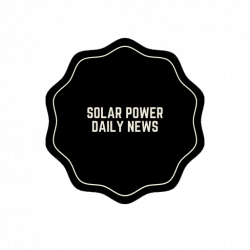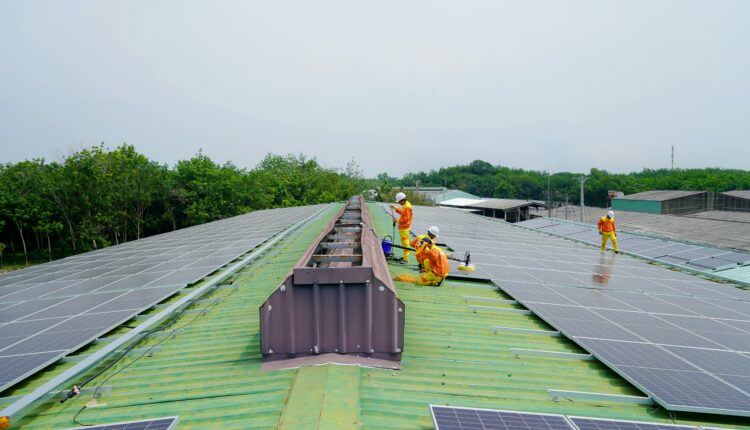Solar Power Inverter
Solar power inverters are an essential part of any solar power system. Without an inverter, your solar panels would be unable to convert the DC power they produce into AC power, which is what your home or business needs to run. In this blog post, we’re going to give you a crash course in solar power inverters. We’ll cover everything from the benefits of solar power inverters to how they work to the different types that are available. We’ll even provide some tips on choosing and installing the right solar power inverter for your needs.
Introduction To Solar Power Inverters
Solar power inverters are devices that convert sunlight into electricity. They are a key component in any solar power system, and can be used to power homes, businesses, and even vehicles. Solar power inverters are becoming increasingly popular as consumers look for ways to reduce their energy costs and reliance on fossil fuels. There are a variety of solar power inverters on the market, so it is important to compare products before making a purchase.
There are a number of things to consider when purchasing a solar power inverter. The first is the size of the inverter. Some inverters are designed for small homes, while others are more suited for larger installations. The second consideration is the type of inverter. There are three main types: direct-drive, belt-drive, and tracker. Each has its own advantages and disadvantages. Direct-drive inverters have a single motor that powers all the output devices. This type is best for large systems where there is one central switchboard. Belt-drive inverters use two belts to power the motors; one drives the input shafts and one drives the output shafts. This type is better for smaller systems where there are multiple output devices (such as lights and fans). Tracker inverters use electronic sensors to track the sun’s movement across the sky, which allows them to produce more voltage than direct-drive or belt- drive inverters. They are less common than either type, but can be more versatile because they can be used with different sized systems.
When choosing a solar power inverter, it is important to consider your budget, needs, and preferences. Once these factors have been determined, it is easy to compare products on the market.
The Benefits Of Solar Power Inverters
If you’re looking to increase your energy independence or reduce your dependence on fossil fuels, solar power inverters may be the right choice for you. Solar power inverters have many benefits, including:
– Reduced dependency on fossil fuels: Solar power inverters can help to reduce a household’s reliance on fossil fuels. This is because they can convert DC electricity into AC electricity, which can then be used by consumers.
– Increased energy independence: Solar power inverters can also help to increase a household’s energy independence. This is because they allow households to generate their own electricity without relying on an external source of supply (like a utility).
– Reduction in greenhouse gas emissions: Solar power inverters also have the potential to reduce greenhouse gas emissions. This is because they help to convert DC electricity into AC electricity, which has less environmental impact than using traditional sources of electricity (like coal or oil).
– Ability to generate electricity in remote locations: One additional benefit of solar power inverters is that they can often be used to generate electricity in remote locations. This is due to their ability to convert DC Electricity into AC Electricity – which is more commonly used throughout the world.
How Solar Power Inverters Work
Solar power inverters are simple devices that are used to convert the DC electricity produced by solar panels into AC electricity. This is necessary in order to use this electricity with devices that use AC electricity, such as televisions, radios, and computers. Inverters can be used alone or in conjunction with batteries, so that the stored energy can be used when needed.
The inverter uses a number of sensors to detect the amount of sunlight that is hitting the solar panel. This information is used to calculate the voltage and current needed to power devices in an AC format. Once this information is received, the inverter switches from DC to AC mode, and begins to produce electricity.
Types Of Solar Power Inverters
Solar power inverters are a great way to save money on your energy bills. They’re also a good way to help the environment. However, it’s important to choose the right type of solar power inverter for your needs. There are different types of solar power inverters, each with their own advantages and disadvantages. Here are some of the most common types:
Grid-Interactive Inverters: These inverters connect directly to the grid, allowing you to use electricity from the grid when there is surplus energy available. This is good if you want to use less electricity overall, or if you have unreliable access to electricity from your own source (for example, if you live in a rural area). Grid-Interactive Inverters can be expensive, however, so make sure that you’re aware of all the costs and benefits before making a purchase decision.
Battery Backup Inverters: These inverters keep track of how much energy each household unit uses throughout the day/night cycle and automatically switches off appliances when they reach their designated limit. This prevents overloading during peak hours and keeps your home running smoothly even when there isn’t enough sunlight present for photovoltaic panels. Battery Backup Inverters are cheaper than Grid-Interactive Inverters but require more maintenance work; they should be checked every few months by an electrician or technician who knows how to work with them properly.
Solar Powered Electric Vehicles (SPEVs): SPEVs run solely on solar power – without any fuel – so they don’t produce emissions like gasoline vehicles do! They’re perfect for long trips where gas stations might not be accessible or practical – like traveling across country or up north in Canada during wintertime! SPEVs aren’t as popular yet because they tend cost more than regular cars and don’t come with many built in features yet; however this could change soon as technology improves!
Choosing The Right Solar Power Inverter
If you’re looking to install solar power, then you’ll need to choose the right inverter. In this section, we’ll discuss the different types of inverters and how they function. We’ll also discuss why size matters when choosing an inverter, and how to select the right one for your needs.
There are several different types of inverters, each with its own benefits and drawbacks. The three main inverter types are the linear, MPPT, and hybrid types. Each has its own advantages and disadvantages, so it’s important to choose the right one for your needs.
Linear inverters work best when you have a steady power output from your solar panels. They’re less efficient when the power output from your solar panels varies a lot, so they’re not ideal if you have a high-power panel system that produces more energy during peak hours than off-peak hours. Linear inverters also tend to be larger than other types of inverters.
MPPT (max Power Point Tracking) inverters track the power output from your solar panels and adjust their operating voltage accordingly in order to maximize energy production. This type of inverter is usually smaller than linear and hybrid inverters, but it can be more difficult to install because it requires precise wiring connections between your solar panel array and the controller unit in your home or office.
Hybrid Inverters combine features of both MPPT and linear inverters into one unit. This makes them an ideal choice for systems with variable power outputs from your solar panels, such as those that produce more energy during peak hours than off-peak hours or those with multiple generating sources (such as an rooftop photovoltaic system combined with electricity generated by a small wind turbine). Hybrid converters usually offer better performance than either MPPT or linear units alone, but they may be more expensive than either type of converter on its own.
Installing A Solar Power Inverter
Installing a solar power inverter is an easy and affordable way to increase your energy independence. Inverters can be used with any type of solar panel, and they convert DC power (from your solar panels) into AC power that you can use in your home or office. They come with a 5 year warranty, so you can rest assured that you will be able to use this investment for years to come.
There are a few things to keep in mind when installing your inverter. First, make sure that you have an appropriate location for it. Inverters can be large and require a large space to install, so make sure that you have the room before you buy one. Second, verify that your solar panel is compatible with the inverter. Not all solar panels are compatible with inverters, so be sure to research which ones are before buying them. Finally, purchase an inverter from a reputable company like SunPower or APC. These companies have been manufacturing inverters for years and will offer you the best warranty in the industry.
Maintaining A Solar Power Inverter
It is important to maintain a solar power inverter in order to ensure that it works properly. There are different types of solar power inverters, and each requires specific care. The tools and materials needed vary depending on the type of solar power inverter, but the steps for maintaining all types of solar power inverters are essentially the same.
First, it is important to inspect the inverter regularly for signs of wear or damage. If there are any signs of wear or damage, then it needs to be repaired or replaced as soon as possible. Second, clean and oil the moving parts on the inverter every month. This will help to keep them running smoothly and prevent any malfunctions. Third, make sure that all cables are connected securely and that there are no loose connections anywhere on the inverter. Fourth, check for corrosion around fittings and joints on the inverter. If corrosion is found, then it needs to be fixed before continuing with maintenance steps 5-8 below. Fifth, if necessary, replace any filters or fans in accordance with manufacturer instructions. Sixth, test all functions of the inverter by switching it on and off several times – this will help identify any issues early on before they become too serious. Finally, store your solar power inverter in a dry location where temperatures stay above freezing throughout winter months (easterly winds can cause ice accumulation).
Final Thoughts
To sum it up, solar power inverters are an important part of any solar power system. They help to increase energy independence and can generate electricity in remote locations. There is a variety of solar power inverters on the market, so it is important to compare products before making a purchase.


Comments are closed.